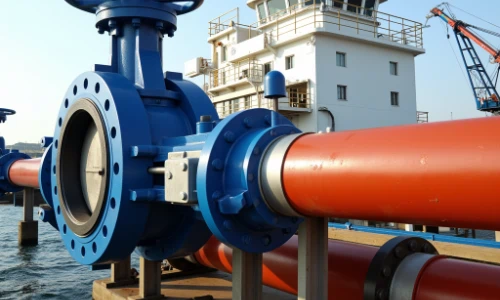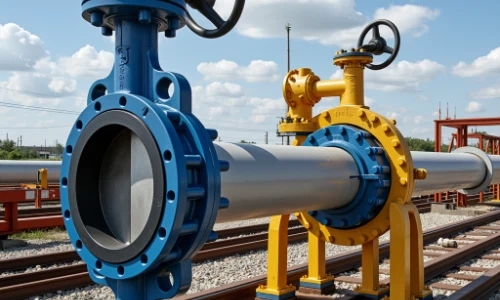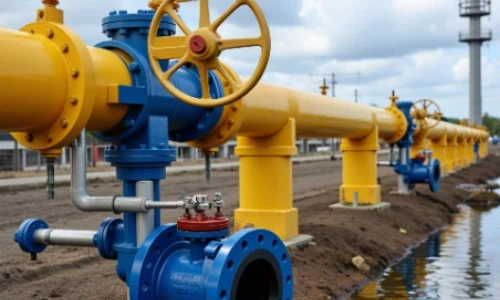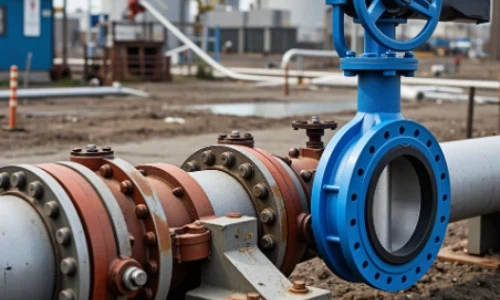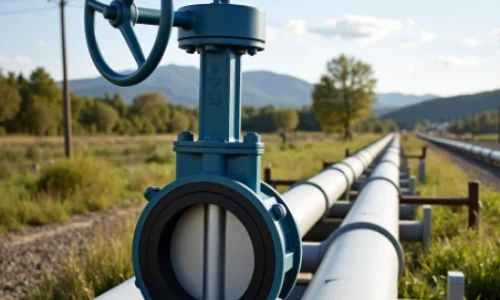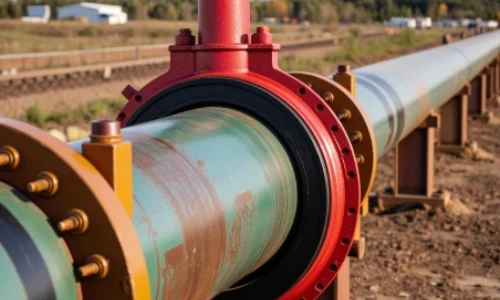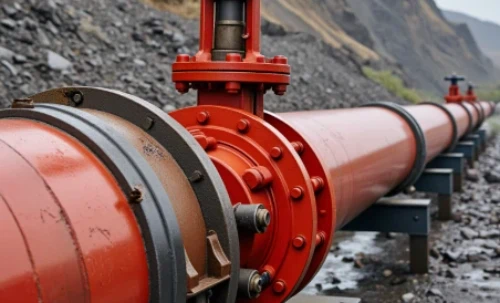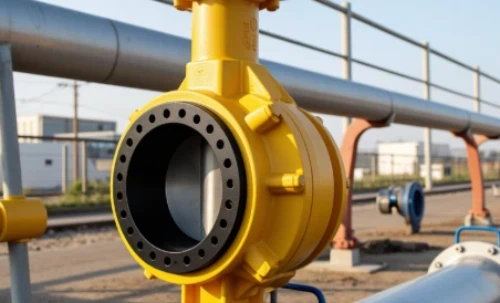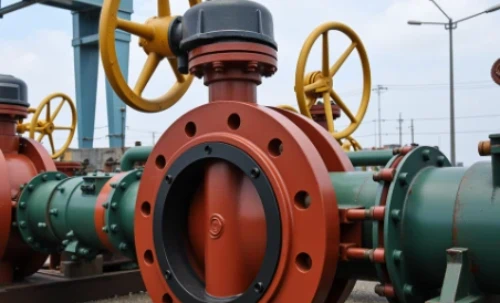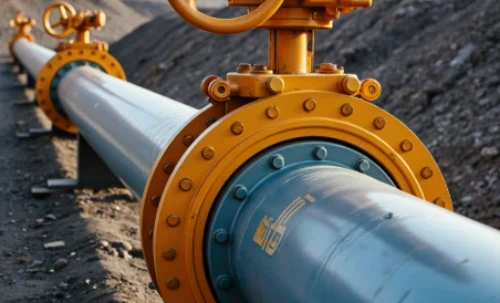A Manufacturer's Guide to Sanitary Butterfly Valves
An engineering deep-dive into the design, materials, surface finishes, and critical standards (3-A, ASME BPE, EHEDG) that define a true sanitary butterfly valve for hygienic and aseptic applications.
TABLE OF CONTENTS
1. Design & Principles
2. Materials & Standards
The Hygienic Imperative: Why Industrial Valves Are Unacceptable
In industries like food & beverage, pharmaceuticals, and biotechnology, product purity is paramount. A standard industrial valve, even if made from stainless steel, poses a significant contamination risk. The fundamental difference lies in cleanability and the elimination of areas where microbes can colonize. Key failure points of industrial valves in sanitary systems include:
- Internal Crevices & Dead Spaces: Gaps behind seats, threaded connections, and sharp internal corners create "dead legs" where product can stagnate and bacteria can form biofilms, which are highly resistant to cleaning agents.
- Porous Surface Finishes: Standard cast surfaces are microscopically rough, providing an ideal environment for bacteria to attach and evade Clean-in-Place (CIP) and Steam-in-Place (SIP) cycles.
- Non-Compliant Materials: Industrial-grade elastomers (seals) and metals may leach harmful compounds into the process media or degrade under aggressive cleaning regimes, contaminating the final product.
- Poor Drainability: Designs that are not fully self-draining can leave residual moisture or product after a cleaning cycle, which can lead to microbial growth or cross-batch contamination.
- External Contamination Traps: Exposed threads, bulky flanges, and complex external geometries on industrial actuators can trap dirt and process fluids, making effective washdowns impossible and creating a vector for contamination.
A true sanitary butterfly valve is engineered from the ground up to mitigate these risks, ensuring product integrity and compliance with stringent regulatory standards. The focus shifts from simply containing pressure to guaranteeing verifiable cleanliness.
Core Sanitary Design Principles
A leading sanitary butterfly valve manufacturer integrates specific design features to ensure absolute hygiene and compliance.
1. Crevice-Free, Self-Draining Body
The valve body is meticulously designed to be free of internal pockets, ledges, or sharp corners. Wetted surfaces are contoured to promote full drainage when installed at a slight angle. The seat is designed to create a smooth, uninterrupted transition with the pipe bore, eliminating the gap between the body and seat where bacteria could multiply.
2. Highly Polished & Passivated Wetted Surfaces
All surfaces in contact with the process fluid (body, disc, stem) are mechanically polished to a very low surface roughness (Ra) value, typically below 0.8 µm (32 µin), with 0.4 µm (15 µin) or better often required for pharmaceutical applications. Following polishing, the surfaces undergo electropolishing and passivation to remove free iron and create a chromium-rich passive layer, enhancing corrosion resistance and further reducing microscopic sites for bacterial adhesion.
3. FDA & USP Class VI Compliant Seals
The seat and stem seals are the most critical components for both sealing and hygiene. They must be manufactured from elastomeric or plastic compounds that are certified to meet FDA 21CFR 177.2600 (for rubber articles) and/or USP Class VI testing standards. This ensures the materials are non-toxic, non-leaching, and will not adulterate the product.
4. Hygienic End Connections (Tri-Clamp®)
Sanitary systems almost exclusively use quick-disconnect fittings like Tri-Clamp®. This design provides a smooth, crevice-free internal bore and allows for fast, easy disassembly for manual cleaning, inspection, and maintenance without the need for specialized tools. Welded butt-weld ends are also common for permanent installations.
Exhaustive Material & Finish Compliance
Material selection in sanitary applications is dictated by regulatory compliance, cleanability, and resistance to both process media and cleaning agents.
| Component | Material Specification | Key Characteristics & Primary Use Case | FDA Compliance | USP Class VI | 3-A / EHEDG |
|---|---|---|---|---|---|
| Wetted Metal Parts: The Foundation of Purity | |||||
| Body & Disc | Stainless Steel 316L (UNS S31603) | The absolute industry standard. Low carbon content prevents carbide precipitation during welding. Excellent corrosion resistance for most food, beverage, and pharma applications. | Compliant | Compliant | Required |
| Stainless Steel 304L (UNS S30403) | A lower-cost alternative for less corrosive media (e.g., dairy, water). Not recommended for high-chloride or acidic products. | Compliant | Compliant | Acceptable | |
| Hastelloy® C-22/C-276 | Premium nickel alloy for highly corrosive services like saline, acids, or WFI (Water for Injection) systems where chlorides are a concern. | Compliant | Compliant | Compliant | |
| Elastomers & Seals: The Critical Sealing Interface | |||||
| Seat / Seals | EPDM (Ethylene Propylene Diene Monomer) | Excellent for hot water, steam (SIP), and many acids/alkalis. Poor performance in oils and solvents. Very common in food & beverage. | Compliant | Available | Compliant |
| Silicone (VMQ) | Excellent temperature range (-60°C to 200°C) and flexibility. Good for many food products but has lower tear strength than EPDM. | Compliant | Available | Compliant | |
| FKM (Viton®) | Excellent resistance to oils, fats, and many chemicals/solvents. Higher temperature rating than EPDM. Often used in cosmetics and some food applications. | Compliant | Available | Compliant | |
| PTFE (Polytetrafluoroethylene) | Virtually universal chemical inertness and high temperature resistance. Non-elastomeric, making it rigid. Often used as an envelope or overlay on a flexible core. | Compliant | Compliant | Compliant | |
| TFM™ / Modified PTFE | An enhanced version of PTFE with lower porosity, reduced cold flow, and a smoother surface, making it superior for critical pharma applications. | Compliant | Ultimate | Compliant | |
| Surface Finishes (Wetted Areas) | |||||
| Finish | SF1: Ra ≤ 0.8 µm (32 µin) | Standard sanitary polish. Suitable for most food, beverage, and dairy applications. Achieved by mechanical polishing. | N/A (Finish Standard) | ||
| SF4: Ra ≤ 0.4 µm (15 µin) + Electropolish | ASME BPE standard for high-purity pharmaceutical and biotech applications. Electropolishing provides ultimate cleanability and corrosion resistance. | ||||
| SF5: Ra ≤ 0.63 µm (25 µin) | Common intermediate mechanical polish. | ||||
| SF6: Ra ≤ 0.4 µm (15 µin) | Mechanically polished only, without electropolishing. | ||||
Sanitary Valve Type Comparison
How does a sanitary butterfly valve stack up against other common hygienic valve types?
| Feature | Sanitary Butterfly Valve | Sanitary Diaphragm Valve | Sanitary Ball Valve |
|---|---|---|---|
| Flow Path | Fair (Disc obstructs flow) | Good (Unobstructed weir) | Excellent (Full, straight-through port) |
| Cleanability (CIP) | Good | Excellent (No dead space) | Fair (Cavity around ball can trap product) |
| Throttling Ability | Fair | Excellent | Poor |
| Size & Weight | Excellent (Compact, lightweight) | Moderate | Heavy and bulky |
| Cost-Effectiveness | Excellent | High | Moderate |
| Primary Application | On/Off isolation for liquids with low-to-medium viscosity. Widely used in food, beverage, dairy. | Aseptic and sterile processes. Ideal for WFI, biotech, and pharmaceutical media. Excellent for throttling. | Viscous liquids, powders, or applications requiring full, unobstructed flow. |
Governing Standards: The Framework of Trust
Compliance is not optional. Reputable sanitary butterfly valve manufacturers design and certify their products to these critical international standards.
3-A Sanitary Standards
- Origin: USA (Dairy & Food Industry)
- Focus: Prescribing hygienic equipment design criteria. Ensures equipment is cleanable and inspectable.
- Key Docs: 3-A SSI 62-02 for Butterfly Valves.
- Significance: The benchmark for food, beverage, and dairy processing equipment in North America.
ASME BPE
- Origin: USA (Bioprocessing)
- Focus: Design, materials, construction, and inspection for equipment in biopharmaceutical manufacturing.
- Key Docs: ASME BPE Standard. Defines dimensions, surface finishes (SF1-SF6), and material requirements.
- Significance: The global gold standard for pharmaceutical and high-purity applications.
EHEDG
- Origin: Europe
- Focus: Promoting safe food production by improving hygienic engineering and design.
- Key Docs: Various EHEDG Guidelines. Focuses on verifiable, test-based cleanability.
- Significance: The leading authority on hygienic design in Europe, with increasing global recognition.
FDA & USP
- Origin: USA (Regulatory)
- Focus: Material safety and compliance for food and drug contact.
- Key Docs: FDA 21CFR for material regulations; USP Class VI for biocompatibility testing of plastics.
- Significance: Mandatory for materials used in food and pharmaceutical production in the US.
| Tube OD (inch) | Tube OD (mm) | Flange OD (A) | Face-to-Face (L) |
|---|---|---|---|
| 1" | 25.40 | 50.5 | 50.8 |
| 1.5" | 38.10 | 50.5 | 50.8 |
| 2" | 50.80 | 64.0 | 54.0 |
| 2.5" | 63.50 | 77.5 | 57.2 |
| 3" | 76.20 | 91.0 | 63.5 |
| 4" | 101.60 | 119.0 | 66.7 |
| 6" | 152.40 | 167.0 | 76.2 |
| Material | Temp Range (°C) | Max Pressure @ 20°C (bar) | SIP Cycle Max Temp | Primary Advantage |
|---|---|---|---|---|
| EPDM | -34 to 149 | 10 | 150°C (Intermittent) | Excellent for steam & water |
| Silicone | -50 to 200 | 8 | 130°C (Intermittent) | Wide temperature range |
| FKM (Viton®) | -26 to 204 | 10 | 170°C (Intermittent) | Excellent chemical/oil resistance |
| PTFE | -73 to 232 | 10 | 230°C (Continuous) | Universal chemical resistance |
| Designation | Max Ra (µm) | Max Ra (µin) | Process | Typical Application |
|---|---|---|---|---|
| SF1 | 0.8 | 32 | Mechanical Polish | Food, Beverage, Dairy, General Sanitary |
| SF2 | 0.63 | 25 | Mechanical Polish | Higher Grade Food, Cosmetics |
| SF3 | 0.5 | 20 | Mechanical Polish | Fine Chemicals, Diagnostic Reagents |
| SF4 | 0.4 | 15 | Mech. Polish + Electropolish | Pharmaceutical, Biotech, WFI, Aseptic |
| SF5 | 0.63 | 25 | Mech. Polish + Electropolish | Higher-purity systems where SF4 is not required |
| SF6 | 0.4 | 15 | Mech. Polish + Electropolish | Alternative to SF4 (typ. European spec) |
| Size (inch) | 1" | 1.5" | 2" | 2.5" | 3" | 4" | 6" |
|---|---|---|---|---|---|---|---|
| Weight (kg) | 1.2 | 1.5 | 2.1 | 3.0 | 3.8 | 5.5 | 12.0* |
|
*Footnote (Per Protocol 1.2.2): The data provided is based on engineering principles and typical industry data for standard 316L valves with manual handles. Weights can vary (+/- 15%) based on the specific manufacturer, body casting thickness, and type of actuation. This data is for preliminary planning only. Final, certified weights must be obtained from the sanitary butterfly valves manufacturer for detailed engineering. |
|||||||
Actuation & Automation in Clean Environments
Automating sanitary valves requires actuators and accessories specifically designed for hygienic conditions.
1. Hygienic Actuator Design
Actuators for sanitary applications must be as cleanable as the valves they operate. Key features include:
- Smooth, Crevice-Free Housings: Often made from polished stainless steel or a durable, coated aluminum with no external threads or dirt traps.
- High IP Ratings: A minimum of IP67 is required, with IP69K preferred for resistance to high-pressure, high-temperature washdowns.
- Food-Grade Lubricants: All internal and external lubricants must be FDA-approved food-grade to prevent contamination in case of a leak.
2. Control & Feedback Systems
- Automated Control Heads: Modern control tops integrate solenoid valves and position feedback sensors into a single, compact, washdown-safe unit. They often feature visual status indication (e.g., color-changing LEDs) for easy monitoring.
- I/P Positioners: For throttling applications, an electro-pneumatic positioner provides precise, proportional control of the valve disc, typically with HART or Fieldbus communication protocols.
- Network Integration: Actuators and control tops can be integrated into plant control systems (DCS, PLC) via protocols like AS-Interface (AS-i) for simplified wiring and enhanced diagnostics.
Application Recommendations
Selecting the right valve package from a specialized sanitary butterfly valves manufacturer ensures optimal performance and compliance.
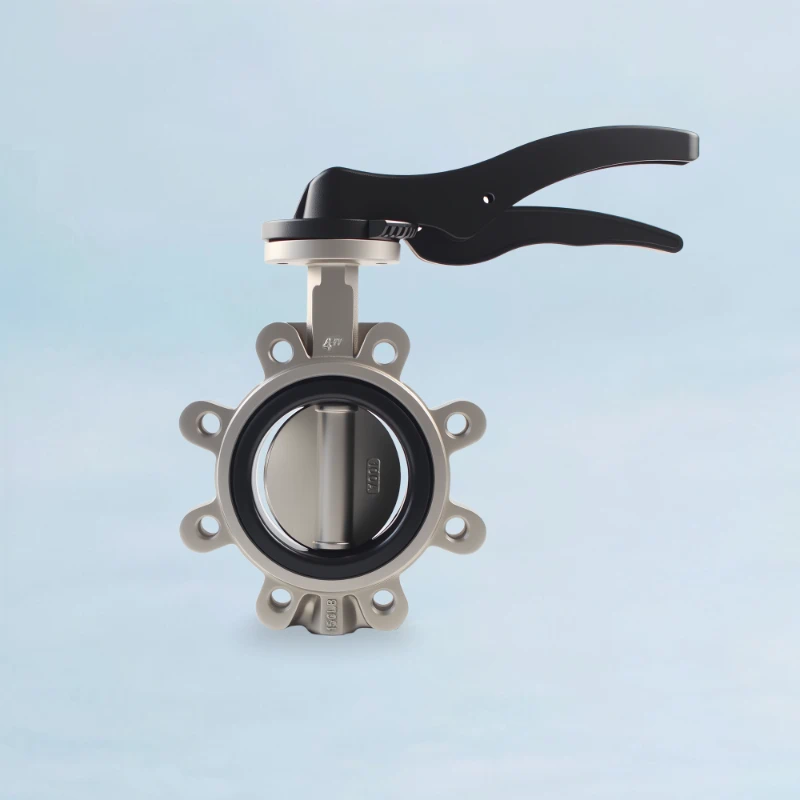
Manual Sanitary Butterfly Valve
- Application: Food & Beverage, Dairy, Breweries.
- Body/Disc: SS 316L, SF1 Polish (Ra ≤ 0.8 µm).
- Seat: EPDM or Silicone (FDA Compliant).
- Key Feature: Cost-effective, reliable isolation for less critical transfer lines. Multi-position pull handle for simple throttling.
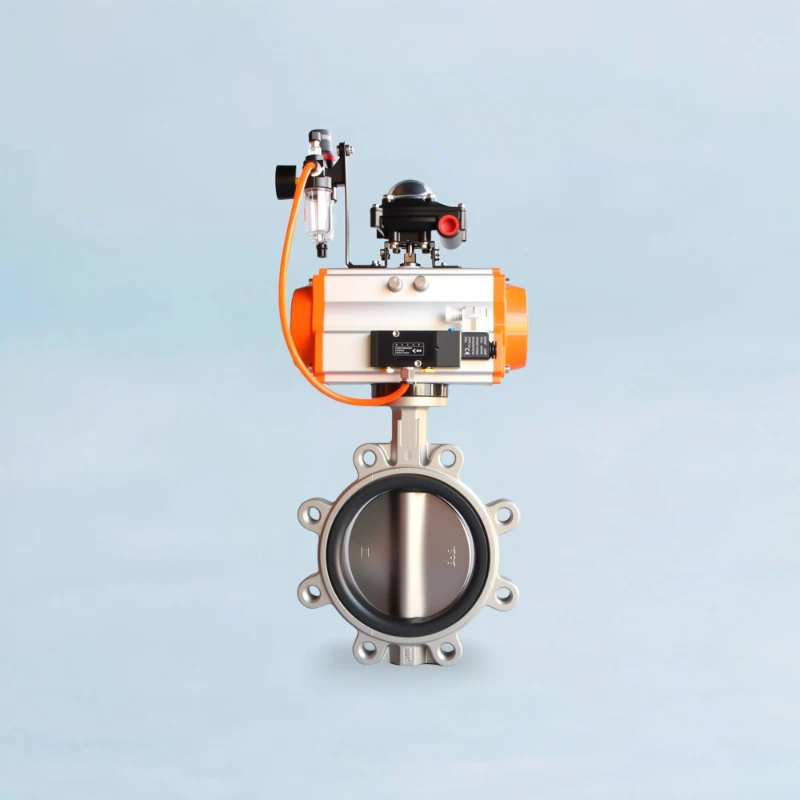
Automated Sanitary Valve Package
- Application: Process automation in food, cosmetics, fine chemicals.
- Body/Disc: SS 316L, SF3 Polish (Ra ≤ 0.5 µm).
- Seat: FKM (Viton®) for chemical compatibility.
- Key Feature: Stainless steel actuator with integrated control top for automated CIP/SIP cycles and process control.
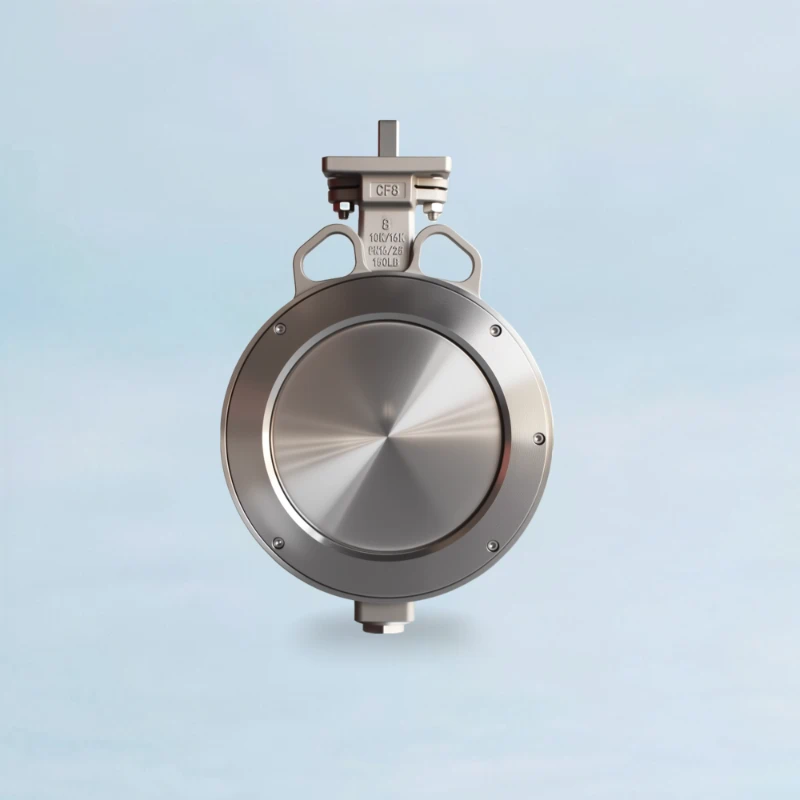
High-Purity ASME BPE Valve
- Application: Pharmaceutical, Biotechnology, WFI, Sterile Processes.
- Body/Disc: SS 316L, SF4 Polish (Ra ≤ 0.4 µm + EP).
- Seat: PTFE or TFM™ (USP Class VI Certified).
- Key Feature: Fully documented, ASME BPE compliant design for ultimate purity and cleanability. Full material traceability (MTRs) included.
Frequently Asked Questions
Quick answers from sanitary butterfly valve manufacturers.
What is the difference between "FDA Compliant" and "USP Class VI Certified"?
"FDA Compliant" means the raw materials used to make the component (e.g., an EPDM seat) are listed in the FDA's Code of Federal Regulations (CFR) as safe for food contact. "USP Class VI Certified" is a much more stringent biocompatibility test for plastics and polymers, involving systemic toxicity and implantation tests. It is the gold standard for medical devices and pharmaceutical applications.
What does CIP / SIP mean for a butterfly valve?
CIP (Clean-in-Place) refers to cleaning the process system without disassembly, using chemical solutions, high flow rates, and temperature. A sanitary valve must be designed to be fully cleaned by this process. SIP (Steam-in-Place) is a sterilization process using high-temperature steam (typically 121°C or higher). The valve's seat and seal materials must be able to withstand these repeated high-temperature cycles without degrading.
Why is 316L stainless steel the standard and not 304L?
While both are "food grade," 316L contains 2-3% Molybdenum, which 304L lacks. This addition significantly increases its resistance to corrosion from chlorides (salts) and many cleaning chemicals. This makes 316L far more robust and reliable for the wide range of products and cleaning agents found in modern processing plants, justifying its position as the default choice for any reputable sanitary butterfly valves manufacturer.
Hygienic & Aseptic Valve Solutions
Specify a valve compliant with your process needs.

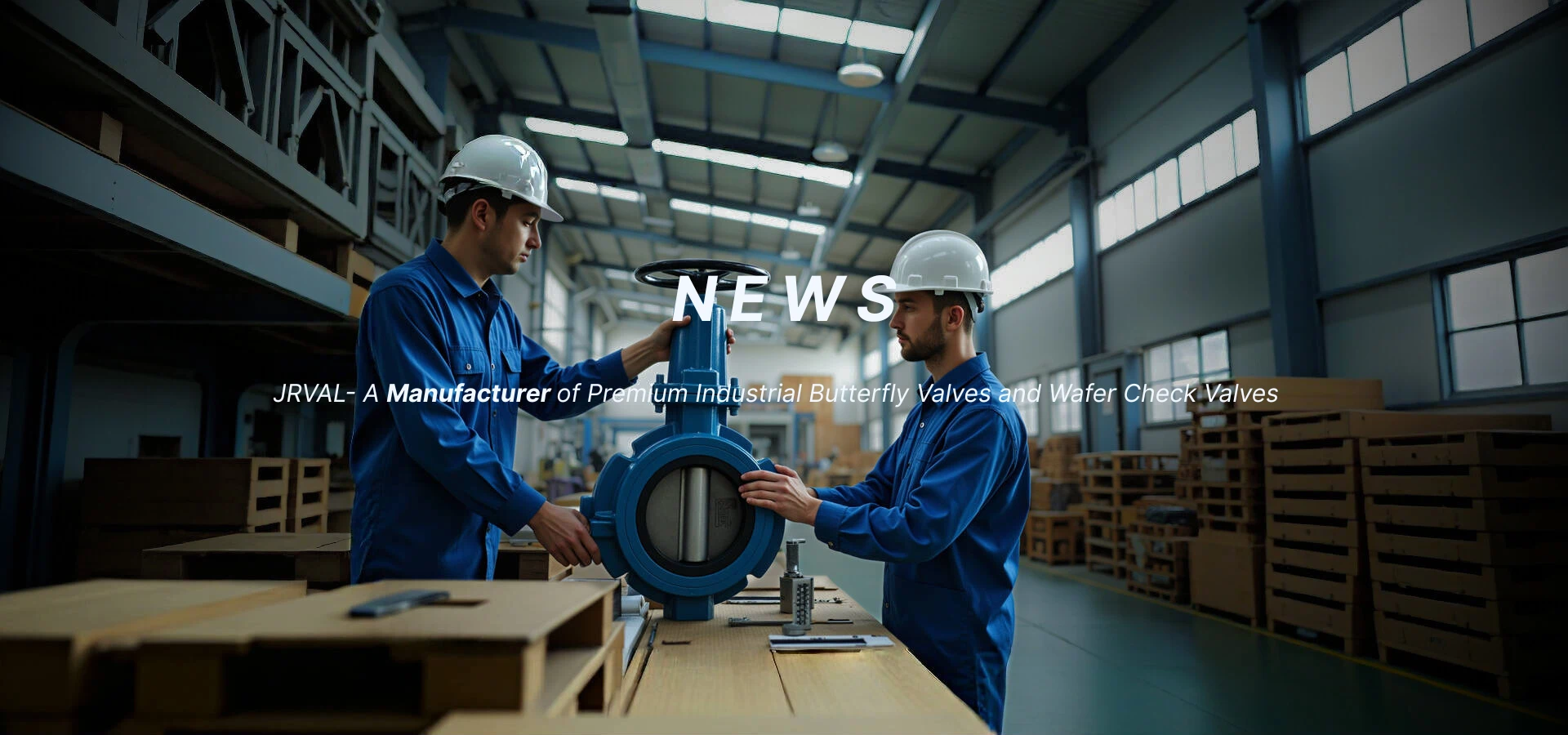
 JRVAL
JRVAL Sep 10 2025
Sep 10 2025